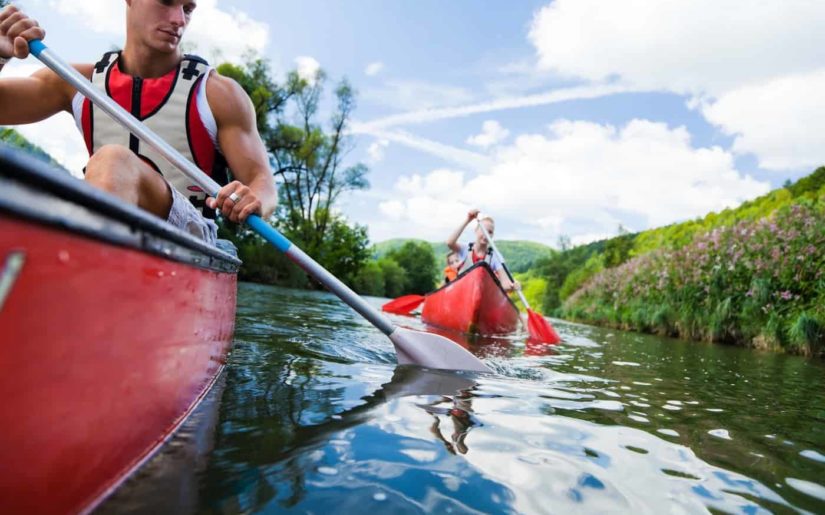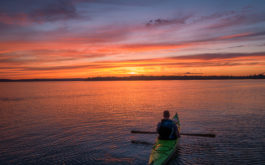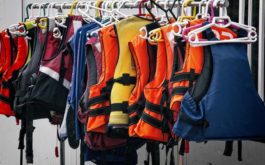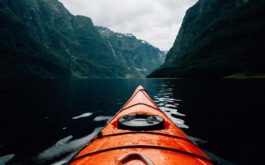Are you about to launch your first canoe adventure? By now, you’ve probably broken in your camping gear. You’ve polished your packing list for layered clothing, camp meals, water purification. Your emergency tools and supplies are prepped. Hopefully, you’ve taken a safety course to enhance your experience and prepare you for the unexpected. Still, there are a few things you might want to add to your gear list before you hit the water.
1. The Right Personal Flotation Device
You’re not likely to forget your PFD, but you might forget how a good fit is important to a comfortable, safe trip. Be sure to try on your PFD over bulky layers. Does it zip up? Does it cinch down to accommodate fair-weather clothing when the sun comes out? How’s your mobility? Some of us select different types of PFDs for specific types of paddling, whitewater, flatwater, and surf. Don’t just grab a cheap orange over-the-shoulder life vest, thinking you’ll just stow it to meet regulations. You want something you’ll be happy wearing every minute you’re on the water.
2. Hard-Core Bug Repellent
Canoe loops and trails tend to be on slow-moving water with marshy, grassy banks. Can you say, “mosquito paradise?” Forget the herbal stuff and go for the big guns. Get any off-the-shelf product that contains at least 10% DEET (N,N-diethyl-meta-toluamide). Wait. Isn’t that stuff toxic? In spite of misconceptions, both the EPA and Consumer Reports have reviewed extensive studies. These studies have cleared DEET as a safe and effective combatant against mosquitoes, fleas, and ticks.
My favorites happen to be Off Deep Woods, but my husband absolutely hates the greasy feel. He opts instead for Repel Dry Family Insect Repellent. Bring along a can to mist your clothing, and wipes to touch up areas where you want a little more precision.
If you’re headed to regions known for the multiple species of small flies, pick up a netted hood and be sure you keep your tent screens closed at all times. These are the tiny biting gnats that irritate outdoors enthusiasts from the Arctic to the equator.
Canoe loops and trails tend to be on slow-moving water with marshy, grassy banks. Can you say, “mosquito paradise?” Forget the herbal stuff and go for the big guns: Any off-the-shelf product that contains at least 10% DEET (N,N-diethyl-meta-toluamide) will do. Wait. Isn’t that stuff toxic?
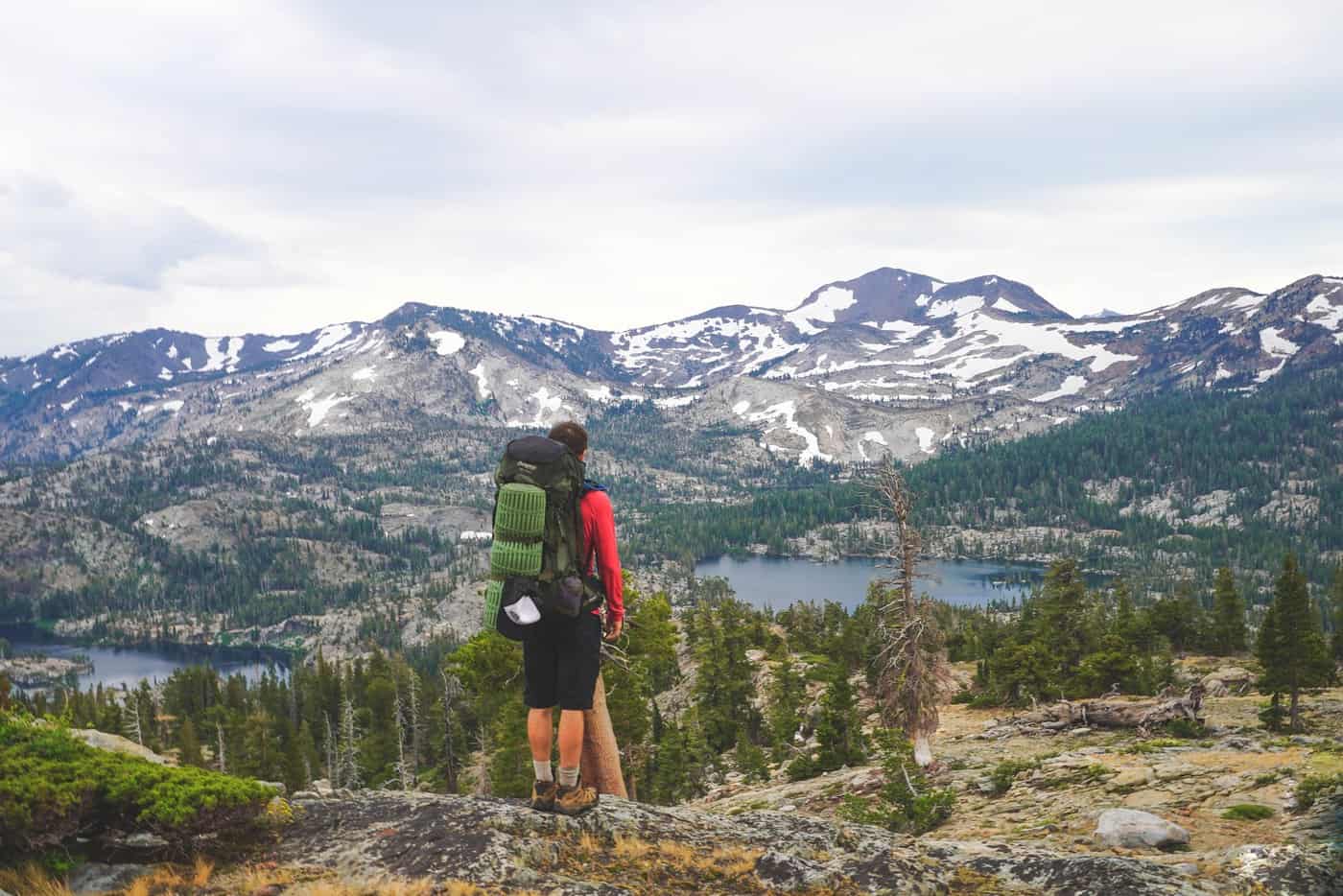
In spite of common misconceptions, both the EPA and Consumer Reports have reviewed extensive studies clearing DEET as a safe and effective combatant against mosquitoes, fleas, and ticks.
My favorites happen to be Off Deep Woods, but my husband absolutely hates the greasy feel and opts for Repel Dry Family Insect Repellent. Bring along a can to mist your clothing, and wipes to touch up areas where you want a little more precision.
If you’re headed to regions known for the multiple species of tiny biting gnats that terrorize outdoors enthusiasts from the Arctic to the equator, pick up a netted hood and be sure you keep your tent screens closed at all times.
4. BONA-FIDE DUNKABLE DUFFELS
Canoes tip and rain falls. Be sure you invest in a couple durable, submersible dry bags like the SeaLine Boundary Portage Pack. Padded backpack-style straps allow you to carry your gear to your campsite or over your portage routes. Inside one fully-waterproof dry bag, store your clothing and personal items. I like to pack things by category within color-coded, water-resistant, silicone-impregnated (SIL cloth) stuff sacks.
A second waterproof dry bag can hold your food and cooking equipment. The impermeable material and double-taped seams will keep water out and help keep odors in. If you aren’t required by regulations to use a Bear Vault, suspend your belongings. That is to say, you can opt to protect your food and fragrant toiletries by first packing them in an Ursack and suspending from a tree.
Finally, be sure you have a thwart bag for the items you’ll use throughout the day. These might include lip balm, bug spray, clothing layers, your compass, laminated maps, and electronics. Thwart hangs from canoe cross braces. While I really like my Granite Gear Wedge model, I still use smaller, translucent dry bags and pouches for extra water resistance.
5. DRY SUIT
If you can splurge for a dry suit, you’ll be happy you have it if you’re paddling colder waters. If you haven’t silently slid across a glassy lake surrounded by mist and fall foliage, or sampled a few dozen miles of the Northern Forest Canoe Trail, you’re missing out. Don’t let the cold limit your paddling options or shorten your season. We like Kokatat’s GORE-TEX® front-entry dry suit, for which they have both men’s and women’s models.
6. Packable Loo
Most waterways require paddlers and rafters to bring self-contained portable toilets, commonly called “groovers”. The Bureau of Land Management offers several DIY suggestions. I like to add separate containers for urine, and easy-open, waterproof containers for toilet paper, hand sanitizer, sealable bucket liners, and why not—reading material. The folks at OARS, the highly-respected rafting outfitters and river conservationists, published a great overview of the subject complete with infographics! (Don’t worry; you don’t have to put down that sloppy joe while you check it out.)
BE PREPARED, STAY INFORMED, AND GET OUTSIDE
Your brain is the best backcountry (and backwater) piece of equipment you can bring on your next trip. Do your research, invest in online or in-person courses, and plan for contingencies. Be sure your trip mates are up to speed on basic first aid, self-rescue techniques, and safety both on and off the water. Then push off from shore for a multi-day paddling trip. You’ll have the confidence and mindset to fully experience your adventure.
